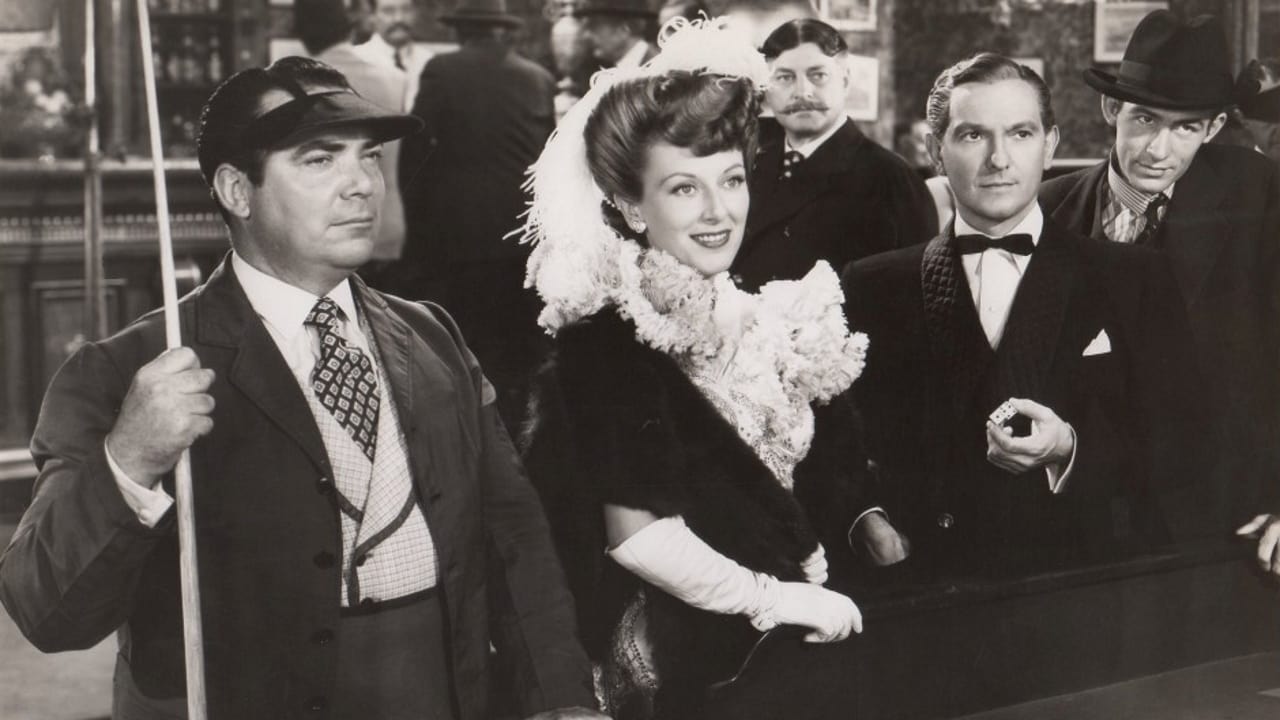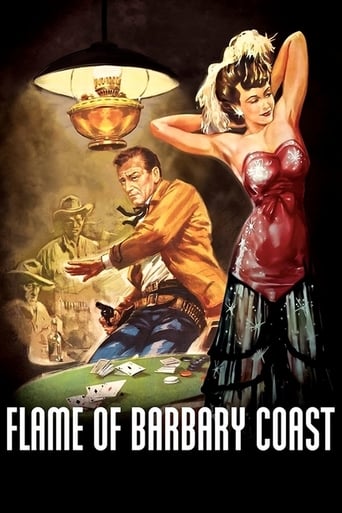

Wow! Such a good movie.
... View MoreI was totally surprised at how great this film.You could feel your paranoia rise as the film went on and as you gradually learned the details of the real situation.
... View MoreClever and entertaining enough to recommend even to members of the 1%
... View MoreThere are moments that feel comical, some horrific, and some downright inspiring but the tonal shifts hardly matter as the end results come to a film that's perfect for this time.
... View MoreIn Republic's musical remake of "San Francisco", the songs are mostly handled by Ann Dvorak, although Virginia Grey also has two or three. As might be expected, production values are extremely lavish by Republic's usual standards. The earthquake is spectacularly staged, even though it occupies less screen footage than the Metro-Goldwyn-Mayer version. The film also benefits greatly from Robert De Grasse's expert photography. He even manages to make Ann Dvorak look enticingly attractive. Her Adele Palmer costumes also help. Joseph Kane's direction rises well above his usual humble standard, making full use of the spectacular sets with effective crane and tracking shots. Dick Van Enger's snappy film editing also helps. The support cast headed by Joseph Schildkraut and Paul Fix is A-1. Snappy musical numbers with their nice chorus lines and zippy score also come as a nice surprise. And even the dialogue is remarkably bright and with-it by Republic standards. Altogether a most enjoyable effort which actually seems to improve on subsequent viewings.
... View MoreConsidering it's a John Wayne film, it already earns a respectable score from me. Aside from his early B-movies and a few horrible mistakes ("The Green Beret" and "The Conqueror" come to mind), any John Wayne film is worth seeing. However, "Flame of the Barbary Coast" is certainly among his lesser starring efforts. I think part of this is because Wayne's bigger than life persona really isn't fully evident in this film--in fact, he seems like a bit of a chump in this one! The film begins with Wayne coming to the Barbary Coast (a rough section of San Francisco) from Montana to collect a debt. However, he takes one look at 'Flaxen' (Ann Dvorak) and is instantly smitten--and spends much of the rest of the film following her about like a love-sick puppy. As I said, it's not the totally self-confident and macho John Wayne that later would be solidified in his films--the later Wayne would have just grabbed the woman and planted a kiss on her or dumped her when she played hard to get! This one, however, spends most of the movie trying to one-up her unscrupulous boss (Joseph Schildkraut) and build an even bigger gambling casino where he wants the chanteuse, Flaxen, to perform. All this striving for one woman--a woman that often didn't seem worth it as she's whiny and demanding. Yet, she is a walking cliché--the woman EVERY man wants to possess--yet not sexy enough to really pull it off well.Overall, the film is worth seeing but easy to skip. The script is only fair and Wayne's support is sometimes weak (Dvorak and Schildkraut--who came off as too wimpy to be a good foil)--though William Frawley is very good in his role as Wayne's friend and mentor. If you are a HUGE Wayne fan, then you must see it. If you aren't, then it probably won;t do much to impress you.By the way, this is one of several films that portray the Great San Francisco Earthquake of 1906. Considering the film was made by a low-budget studio (Republic), its special effects were pretty good but not nearly as nice as films such as "San Francisco" by MGM or "Frisco Jenny" by Warner Brothers.
... View More"Flame of the Barbary Coast" is a movie that I grew up watching in a movie theatre. It's easy to poke fun at a movie like this, or any movie made in that era, if you've only seen it on television. The power and quality of the performance of the film can only be seen on the big screen and not on the television screen. Actually, the cast is quite good and anyone interested in directing or photographing a movie should learn from the film. This movie makes every second and minutes count on the screen, and that's the reason the action never stops. Moving the camera in a certain way to make use of the drama and action with out two many cuts is genius, but then, these people knew what they were doing. Many repeats for good measure with eyes on an actor or actress moving side to side as if they are actually participating in the scene. The catty remarks between Virginia Gray and Ann Dvorak after Virginia Gray sings for an audition with Tito, oh boy - meow indeed! Who cares if Ann Dvoraks singing was a little off, and who cares if John Wayne tried his hand at singing on a horse? Who cares if Fred Mertz played a gambler before he was Ricky Ricardo's best friend? Who care's if Butterfly McQueen didn't get a chance to repeat "Ah knows how to birth babies Miss Scahlett!"? This movie is just good old fashioned campy entertainment with no foul words, no nudity, and in many ways the bad guy won when he said, "With Compliments of the House!" Anybody who doesn't like this movie is an old grumpy!
... View MoreIf you want to see the electric lines in SF in 1906 check out the links listed below from the SF Museum. These two slides in the power point show the lines that were present then.I think that the level of electric service shown in the film was a little advance for 1906, most would not pick upon that. Remember this was a 1945 film, compare it to the 50's not present day films to be fair. Acting talent still beats special effects in my book. Just think what kind of movies John Wayne could do in 2005 with just a few of today's effects. Maybe some one could apply CGI to an older movie? Good movie, to bad we get so few good movies in the current productions.http://www.sfmuseum.org/views/1906.ppt#262,8,Slide 8http://www.sfmuseum.org/views/1906.ppt#264,13,Slide 12Check out the rest of the site worth the time, just as this movie is.
... View More